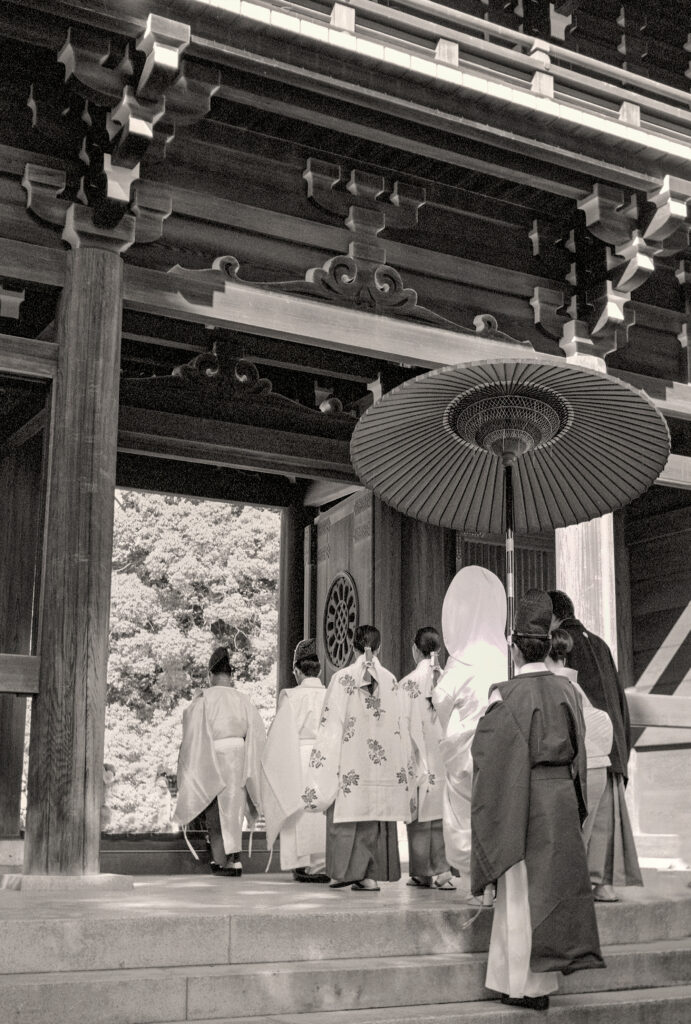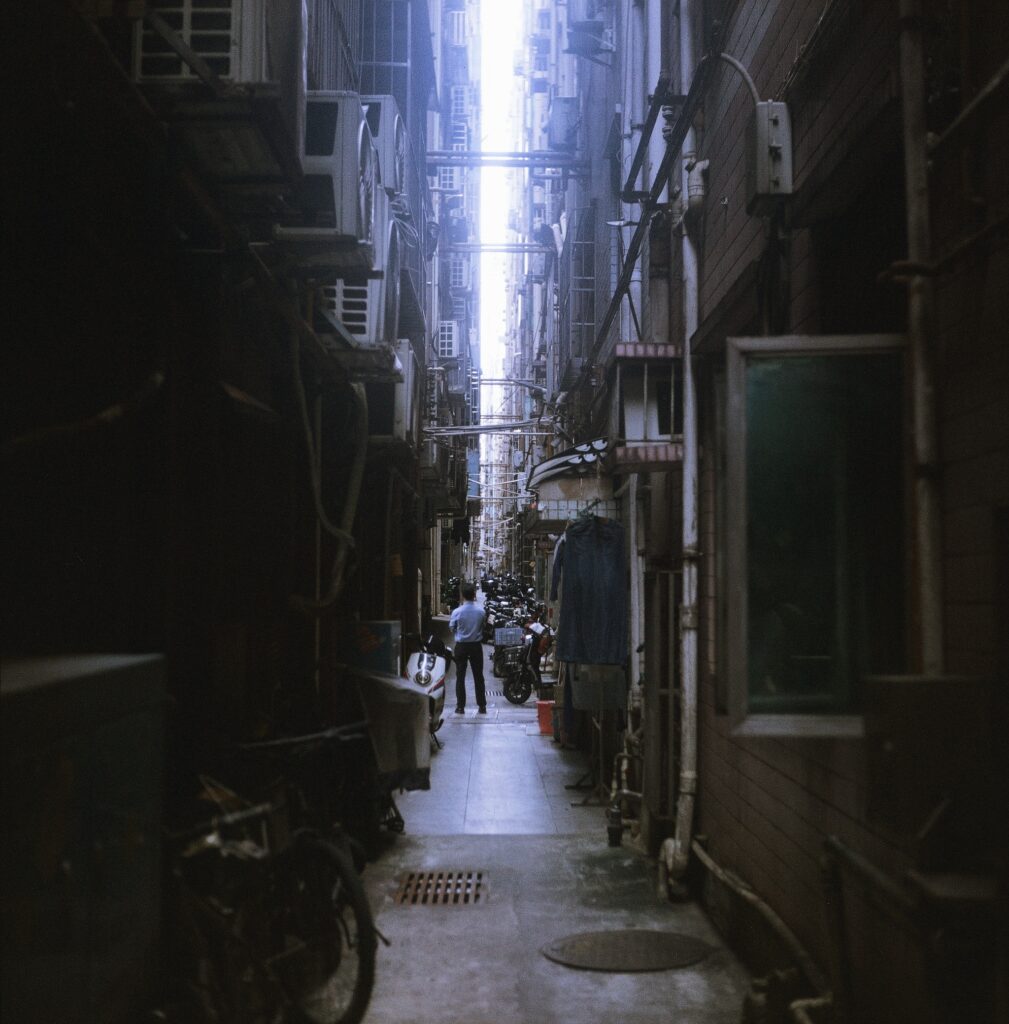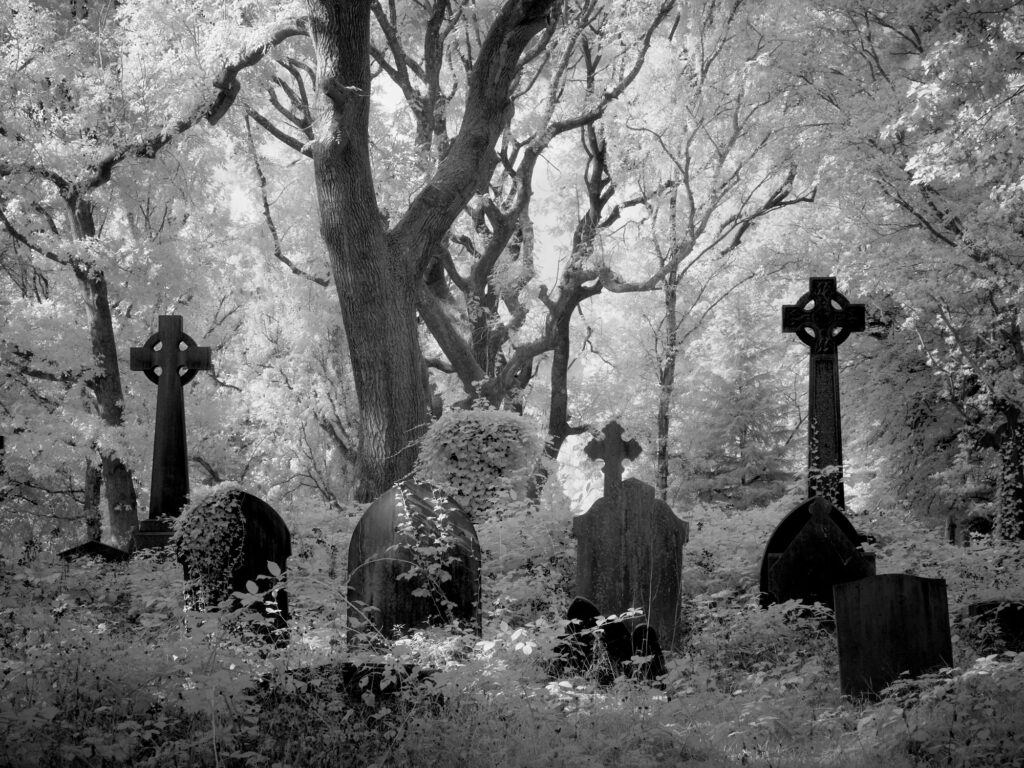Shortly after my 35mmc article about “Understanding Life Backwards” went online, another fascinating example dropped on me. I was working at my computer — with a cable-TV documentary about UFOs blaring in the background — when I heard something that whip-lashed my attention away from the keyboard. Something that may have answered a question that has long bugged me about my father: Why did he try to convince his employer (Battelle Memorial Institute, Columbus, Ohio) to build an electrostatically powered flying machine during the Vietnam War?
Dad may have been an international expert in “metal vapor deposition” — but NOT in designing flying machines that could hover silently in place, glide in any direction, and look a bit like UFOs. And they would do this with only an electrostatic generator as engine. No propellers, jets, wings or rockets.
A Cable Revelation
The cable show that grabbed my attention was Season 1, Episode 3 (“Alien High Tech”) of the Travel Channel series “UFO Witness.” The series follows a former FBI agent who tries to unearth new information about classic and modern UFO cases. [The story is also discussed in one of the History Channel’s more believable “Ancient Aliens” episodes (Season 11, Episode 13).]
They featured interviews with Colonel Philip J. Corso, who was taped just after he’d published his controversial book “The Day After Roswell,” and only a year before his death. Many people who witness or investigate UFOs are warned to never discuss what they’ve seen, on pain of experiencing “things they’d rather not know.” But many of them still choose to tell “what needs to be known” in their death-bed confessions.
Corso’s book was his confession.
Colonel Corso’s Claims
In 1961 and ’62, Corso manned the U.S. Pentagon’s “Foreign Technology Desk.” For decades, it had collected samples of nearly every Russian MiG jet ever made. And he claimed a major goal of his tenure was to give artifacts from the 1947 crash of two UFOs near Roswell, New Mexico, to private R&D labs and universities for reverse-engineering. They’d be free to patent and sell what they developed. Their only requirement was to feed the results back to the U.S. military and other commercial developers.
This novel plan reportedly accomplished four things:
- It moved the reverse-engineering efforts into the private sector, where the Freedom of Information Act couldn’t find them.
- It (in Corso’s own words) “made the history of the patents the history of the inventions.”
- Which quite effectively distanced subsequent patents and inventions from the original Roswell events.
- And it either launched or accelerated research in fields like integrated circuitry, fiber optics, night-vision systems, bullet-proof vests and even medical devices.
And what had yanked my attention over to the TV was Corso’s claim that he sent one of the Roswell artifacts to my father’s Metallurgy Division at Battelle! It was a swatch of indestructible metallic fabric found around the UFOs’ hulls and in their occupants’ flight suits. Though as light as silk, the fabric could not be cut, torn or burned… and deflected bullets when shot. And if crushed and released, it sprang back to its original shape. For this reason, the U.S. Army called it “memory foil.”
Why Did Dad’s Group Get It?
In one of his last interviews before he died, Corso explained that he sent the artifact to dad’s group because they were “The best people we knew of to try to recreate it.” He also said that the fabric seemed to be made of an exceedingly pure nickel-titanium alloy with “special internal structures that may have formed during fabrication.” In addition, Battelle was supposedly “the only place in the country at the time with an arc furnace hot enough to do the alloying.”
Dad and his colleagues did know a lot about fabricating exotic alloy structures. They’d published articles and books about them — including flexible nickel-titanium ones. And dad once told me that his office was right beside Battelle’s “special furnace.”
But though he never discussed his metallurgical projects with us, dad wasn’t nearly as hesitant about other projects, where he helped to:
- Perfect the process that became Xerography,
- Grow the first ruby crystal pure enough for laser applications,
- Create the carbonless carbon paper we still use in multi-part business forms, and
- Formulate the Space Shuttle’s heat-shield coatings.
But as far as I know, dad’s group never completely recreated the flexible, electrically conductive, and almost indestructible “fabric” that was found at Roswell and nearby Corona. They did come close, though, with a recipe for fabricating something called “memory metal” (AKA “metal that remembers its shape”).
And per Battelle’s founding charter (their standard operating procedure) they then transferred their work to other organizations — specifically, the U.S. Naval Ordnance Laboratory and NASA — for further development. The Navy eventually patented and sold their memory metal under the brand name “NITINOL” — short for “NIckel-TItanium Naval Ordnance Laboratory.” And today, if you wear glasses whose wire frames can be bent, twisted and even folded… only to instantly spring back to their original shape — or if an aortic stent is implanted in your body — you may well own an offshoot of the Roswell crash!
And NASA is reportedly using its unique “memory metal” to build jets and rockets whose wings can “morph” in flight without needing mechanical hinges. Pretty wild stuff!
A Sad Possibility
This history may have addressed my nagging question about why– near the end of the Vietnam War– dad felt safe to suggest that Battelle build his UFO-like machine. He thought the vehicles would be great “stealth” alternatives to helicopters in battlefield surveillance applications. Also, they could “stack like pancakes” for efficient shipping on planes, trains, trucks and boats. But their electrostatic motors would never move them at the incredible speeds of “real” UFOs. However, they could cruise silently through the air, glow faintly blue in the dark, and remain airborne even when shot.
Battelle reportedly studied the proposal and concluded that the machine “wouldn’t fly.” But dad corrected their calculations and Battelle conceded that “it might” (but still declined). Personally, I think the thing would have had to be extremely large to carry just one occupant (to say nothing of military cargo). But today, a small pilot-less version would be a WAY cool drone!
I still wonder, though, why dad considered proposing the project in the first place? Even today, anything that smacks of UFOs could be the kiss-of-death for a scientist or research firm. The project also seemed to fall way outside his group’s purview. But conversely, why would Battelle even study the proposal, as dad claimed? Could they both have felt safe about it because they knew his group had tried to reverse-engineer a Roswell artifact?
Maybe dad knew, and maybe he didn’t. For Colonel Corso said he gave the artifact to the head of dad’s division, and the usual requirement for these donations was to keep everyone except the top recipient in the dark about their history. So it’s sadly possible that dad may never have known where the most exciting project of his entire career actually came from.
About the Opening Image(s)
If you’ve heard of the “virtual world” known as Second Life (SL), then you know where I photographed this article’s featured “image.” I’ve always loved architecture and after learning how to use SL’s building tools, I soon found myself teaching “in-world” architectural-design classes for international groups of real-world students.
But if you haven’t heard of SL, it isn’t actually a “computer game” (as some claim). It’s a simulated 3D world with its own physical laws and building tools. And it was an ideal place to quickly create a 3D structural model of what I thought dad’s UFO would have looked like.
The featured image offers two views of my mock-up– with its side open to show interior air flows (red arrows). I could have moved around, and even into, it to take more photos. SL can be a great place to build such models without having to worry about 3D maths!
A Final Note
While writing this article, I stumbled across an energetic independent researcher named Anthony Bragalia, who has apparently made investigating the Roswell-Battelle connection a major life’s work. Most pertinent to this article is his website’s claims that Battelle may have had more involvement with UFOs than just the work of my father’s metallurgy group.
–Dave Powell is a Westford, Mass., writer and avid amateur photographer.
Share this post:









Comments
murray leshner on My Father’s UFO – a One Shot Story
Comment posted: 29/09/2024
I worked with an older guy who was allegedly at Area 51 when he was in the USAF. He would deflect questions about this, typically something like "Oh, man, I saw some @%^# you don't want to know about", then change the subject to his experience at Woodstock that took him a month to recover from. He never retired, working into his 80's, but EXpired...went home one weekend & didn't return Monday. He took his secrets with him.
...and this reminds me of a local college art professor who would assign a project to incoming freshmen that he hoped was outside their comfort zone...many already had an idea they were pretty good with some particular art skill & focused on that.
He would have them make a UFO-like object from whatever materials that inspired them. They learned and did other things during the semester, but at the end, the IFO's were taken outside, and those deemed sturdy enough to withstand propulsion forces would be launched skyward by what means seemed to fit each one. He would take a photo with a Polaroid camera (not Fuji, yet). He would take favorites to Kinko's for magnified b&w reproduction beyond clarity, to poster size. Think "I Want To Believe".
He'd occasionally bring a special favorite enlargement to our gallery/frame shop for custom framing. I arrived one afternoon as he was picking up a finished one. I blurted out "Hey, that looks like a dog bowl with LED's...sorry, just came to mind". He replied 'That's exactly what it was...good eye!' & explained the assignment. There really were some cool results after the reproduction image degradation.
Comment posted: 29/09/2024
Tony Warren on My Father’s UFO – a One Shot Story
Comment posted: 29/09/2024
Dave Powell on My Father’s UFO – a One Shot Story
Comment posted: 29/09/2024
Chris DellaCorte on My Father’s UFO – a One Shot Story
Comment posted: 30/09/2024
Great article! I loved hearing about your Dad's metallurgical explorations and that he instilled a deep curiosity in you that has persisted. However, I can offer a more "down to earth" explanation of the source of NiTi technology. You can find a good article on its early history here:
https://www.inventionandtech.com/content/metal-memory-1
In the article, we learn that W.J. Buehler discovered the shape memory effects in NiTi much by accident. He had been searching for a structural alloy to replace NiCu (the high performance alloy of the day) for missile applications. NiTi alloys were among the binary alloys Buehler investigated after visiting the Library of Congress to read the metallurgy literature on their shelves. He has never mentioned getting "inspiration" from other sources.
I had the pleasure of working on NiTi technology for about 15 years and that work continues today. In my early days, I directly communicated (via snail mail) with W.J. Buehler and I had a chance to learn from him that he stumbled upon the shape memory effect as described by the article. While I suppose it is possible that he got the ideas and materials from a darker government entity, it is not supported by any evidence.
Nonetheless, NiTi, like many technological discoveries, is fascinating and contributing to improvements in medicine, aerospace and industry!
Keep up the good writing!
CDC
Comment posted: 30/09/2024
Comment posted: 30/09/2024
Comment posted: 30/09/2024
Jeffery Luhn on My Father’s UFO – a One Shot Story
Comment posted: 01/10/2024
Comment posted: 01/10/2024
Comment posted: 01/10/2024